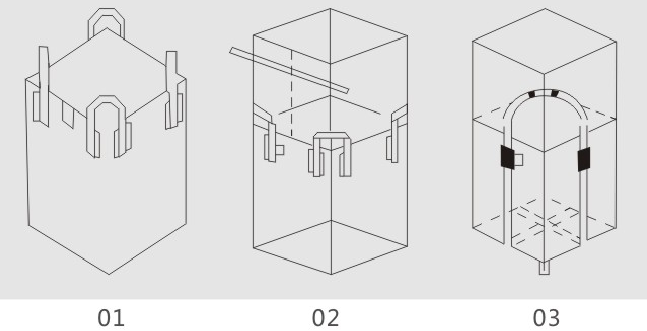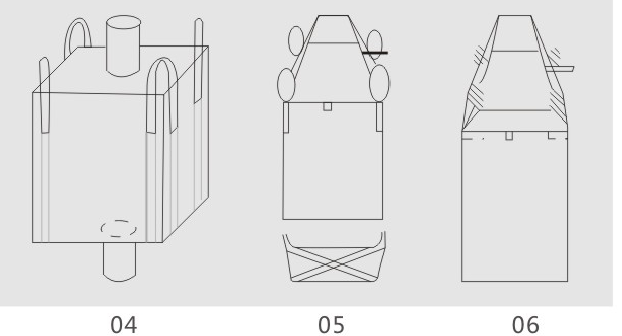The large amount of nitrogen and phosphorus wastewater discharge is one of the major causes of water pollution in China. At present, the main technology is the use of microorganisms to convert organic nitrogen into nitrogen, and the conversion of phosphorus into sludge to remove nitrogen and phosphorus requires a large amount of electrical energy to be consumed through storm gas, which has high operating costs and makes it difficult to reuse resources. At the same time, nitrogen and phosphorus are necessary nutrients for crop growth. However, because of large amounts of wastewater, the concentration of nitrogen and phosphorus is lower than that of land-based crops, and the distribution of wastewater resources and agricultural production does not match in time and space. Therefore, it is difficult to achieve effective utilization of nitrogen and phosphorus in wastewater through crops. The aquatic plant, duckweed, is the smallest flowering plant in the world. It grows fast and has a biomass of up to 50 tons per hectare. The annual biomass and biomass quality (low lignin content and high starch content) have become the study of energy plants. Hot spot. The Zhao Hai team of the Chengdu Institute of Biology, Chinese Academy of Sciences in cooperation with relevant organizations, has screened highly efficient duckweed strains from duckweed resources collected globally. The duckweed culture technology developed for nitrogen and phosphorus in wastewater can remove nitrogen from wastewater. Phosphorus is highly enriched and converted into high-quality biomass feedstock, providing a new model for combining bioenergy feedstock production with wastewater treatment. Under the condition of the pilot scale in Kunming, Yunnan, the potential of nitrogen and phosphorus absorption capacity and resource utilization potential of duckweed and water hyacinth were studied through a two-year long-term system. It was reported for the first time that duckweed (opium) had comparable levels of nitrogen to water hyacinth. Phosphorus absorption capacity and higher resource utilization advantage (high biomass, low lignin content). The results showed that the duckweed had comparable N and P absorption capacity to the currently recognized water hyacinth with the strongest wastewater treatment capacity. The average annual duckweed water for duckweed was 0.39 and 0.40 g/m2/d, and the phosphorus was 0.09 and 0.10 respectively. g/m2/d); and duckweed crude protein was 33.34%, amino acid 25.80%, starch 40.19%, phosphorus 1.24%. Its quality is far better than water hyacinth. This working system has proved the great application potential of duckweed in the treatment of nitrogen and phosphorus in wastewater and resource recycling, providing theoretical support for the duckweed system in wastewater treatment and resource utilization. The research results have been published in the International Journal of Bioresource Technology (Potential of duck*** in the conversion of wastewater nutrients to valuable biomass: A pilot-scale comparison with water hyacinth, 163. 82-91). Bioinformatics technology was used to study the microbial communities in the rhizosphere of duckweed and water hyacinth. It was found that the high nitrogen removal capacity of water hyacinths mainly comes from the contribution of the rhizosphere microorganisms. By adding elastic fillers to the duckweed wastewater treatment system, the nitrogen removal capacity of the duckweed system was significantly improved (19.97% for the total nitrogen removal rate and 15.02% for the ammonia nitrogen removal rate), and the total nitrogen removal efficiency was 56.23%. Further studies have shown that the high abundance of nitrifying bacteria (relative abundance about 3%) and denitrifying bacteria (relative abundance of about 24%) on filler biofilms are the root cause of their increased nitrogen removal capacity. This work not only reveals the differences between microorganisms in duckweed and water hyacinth processing systems, but also demonstrates the role of nitrifying and denitrifying microorganisms through artificial simulation. More importantly, it has significantly improved wastewater from duckweed systems through microbial enhancement. The processing power and hints of the processing power of this system also have great room for improvement. The above research results have been published in the international publication Bioresource Technology (Microbial community and removal of nitrogen via the addition of a carrier in a pilot-scale duck***-based wastewater treatment system. Bioresource Technology, doi:10.1016/ j.biortech. 2014.12.037), and applied for a national invention patent - a method of cultivation of duckweed (201410505275.0). The water depth, duckweed coverage, harvesting cycle, hydraulic residence time and other operating conditions of the pilot treatment system of duckweed wastewater were systematically optimized to obtain better operating conditions and higher duckweed yield and treatment effect: residence time Typical domestic sewage (ammonia nitrogen concentration of 15mg/L, TN concentration of 15-20mg/L, and TP concentration of 2-3mg/L) can be discharged within 6 days. The research results are duckweed wastewater treatment and nitrogen and phosphorus recovery and utilization. The large-scale application provides important reference information and basis, with important practical significance. The above research results have published two research papers, respectively in the international publication Plant Biology (Pilot-scale comparison of four duck*** strains from different genera for potential application in nutrient recovery from 9 wastewater and valuable biomass production. 2014 Jun 18. Doi: 10.1111/plb.12204) and Water Science and Technology(Effects of operation parameters on nutrient removal from wastewater and high-protein biomass production in a duck***-based (Lemma japonica) pilot-scale system, 2014.70(7) :1195-1024), and applied for a national invention patent - at the same time improve duckweed starch and crude protein production and wastewater nitrogen and phosphorus removal method (201410198497.2). In addition, the researchers also conducted a systematic study on the use of duckweed to control heavy metal contamination, especially in paddy fields. Through the systematic screening and evaluation of more than 500 duckweed resources collected from all over the world, comprehensive biomass growth, plant cadmium accumulation, and water cadmium removal, a variety of factors such as duckweed with optimal enrichment effect for heavy metal cadmium were screened out. The strains achieved a 7-day growth of medium- and high-concentration cadmium pollution (1 mg/L and 10 mg/L Cd2+) for 7 days. The duckweed plants accumulated 300 to 6150 mg/kg of cadmium, which meets the standard for cadmium contained in rice in China. 1500-30000 times of water; under low concentration conditions (0.1mg/L and 0.2mg/L Cd2+) for 10 days, the absorption rate of cadmium in duckweed reaches 64.95-83.23%, and the growth rate of dry base also exceeds the control. . Because duckweed can grow in the same ecosystem as rice, the use of duckweed to absorb cadmium has important research value in the treatment of cadmium pollution in rice fields in China and the solution to the problem of national food security. At present, the field test is underway, and it has been realized in the wild that the duckweed has accumulated a large amount of cadmium in the soil, and the cadmium content in the duckweed plant has reached 15mg/kg. At the same time, through the study of histology, it was found that duckweed has a large number of genes related to heavy metal metabolism. The genes associated with the accumulation of heavy metals specific to duckweed discovered in the transcriptome involved the whole processes of absorption, translocation, compartmentalization, and passivation of heavy metals. From genetic expression, it is also proved that duckweed has super heavy metal adsorption capacity. In the rice paddy fields, cadmium pollution has become the most serious challenge to threaten China's environment and food security. This study not only demonstrated that duckweed has the ability to enrich heavy metals, especially cadmium, but also demonstrated its great potential for application in the field of cadmium pollution treatment in paddy fields.
Big bag full name is flexible intermediate bulk container. It is also called ton bag, bulk bag, flexible freight bags, jumbo bag, etc. The main material is polypropylene. The big bag is usually widely used in chemical industry, construction industry, plastics industry, mineral industry, food industry, warehousing industry, etc and it can be used to load powder, flour, solid mass and so on. The big bag is usually used together with crane and forklift. It is convenient for loading, discharging and carrying. The big bag has the advantages of against moisture-proof, dust proof, flexible and security
As to the big can be used in different designs, so we produce big bag with different structures, the main structure are U shape or tubular shape. Some shape with filling spout and discharge spout
Big bag designs:
We are very professional big bag manufacture since 1998. Living in competitive market for many years, we always have confidence, because quality is our brand. For other points, such as price, delivery time, service and payment term, we will make you satisfied. If you have demand, welcome to contact us, we will always be there.
Big Bag (FIBC) Fibc Big Bag,Pp Woven Fibc Big Bag,Bulk Bag Fibc,Fibc Bulk Big Bag HEBEI OHONG PLASTIC CO. LTD. , https://www.tarpaulin-factory.com

